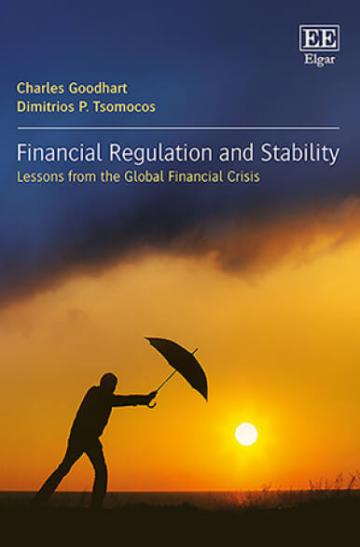Planning for chaos
A three-volume book on planning for financial fragility has become the go-to standard for central bankers, policy-makers and academics.
Dimitrios Tsomocos had a baptism of fire. He started working on financial stability in 1999, following the East Asian-Russian crisis, while an economist at the Bank of England. He advised the Greek government during the eurozone debt crisis, which led to punishing reforms, harsh austerity measures and 12 tax increases between 2010 and 2016 that sparked riots. Few, then, are better placed to describe the societal consequences caused by financial fragility.
The Challenge of Financial Stability, Vol 1, co-authored with Charles Goodhart, a distinguished economist, ex-member of the Monetary Policy Committee and a professor at the LSE, was published in 2012. The paradigm they outlined, the Goodhart–Tsomocos model of financial fragility, is one the pair have been developing since 2003. Tsomocos says, 'Charles’s breadth of knowledge and experience was inspirational, and our mutual respect meant that we encouraged each other to show greater dedication in our efforts to develop this model.'

So what is the model? In a nutshell, the authors find that mainstream macro-models have assumed away financial frictions, especially when it comes to default. 'Default is to macroeconomics what sin is to theology; regrettable but always present!' says Tsomocos.
'When one introduces financial intermediaries, money and liquidity into any worthwhile models, one has to include the possibility of default. Institutions and price formation mechanisms need to become a modelling part of the process, a ‘playable game’. The interaction of liquidity and default lies at the heart of analysis of financial instability. Otherwise it resembles an operation at which the patient is absent from the operating table.'
He adds, 'Events such as the meltdown, austerity and now Brexit, have huge repercussions, and while we cannot predict what the future brings, we can model for such eventualities.'
Praise for the model was effusive. The simplest way of looking at it, says Tsomocos, is to ensure that when planning and modelling growth, one computes all possible factors to ensure greater accuracy for forecasting.
So who is the book aimed at? 'Central banks, policy-makers and planners, and academics,' he says. 'We have had some degree of success,' he adds modestly, revealing several central banks are calibrating their model, including the Banks of England, Chile and Korea, and currently the Central Bank of the Russian Federation.
The second volume, Financial Stability in Practice, followed in 2012, with the third, Financial Regulation and Stability, appearing this year to great acclaim. Oxford Professor Doyne Farmer praised their pioneering work in understanding the causes of financial crises and showing how the system can be better regulated, describing it as 'a must-read for anyone interested in financial stability'.
Read: Financial Regulation and Stability by Dimitrios Tsomocos and Charles Goodhart (Edward Elgar Publishing, £95)




